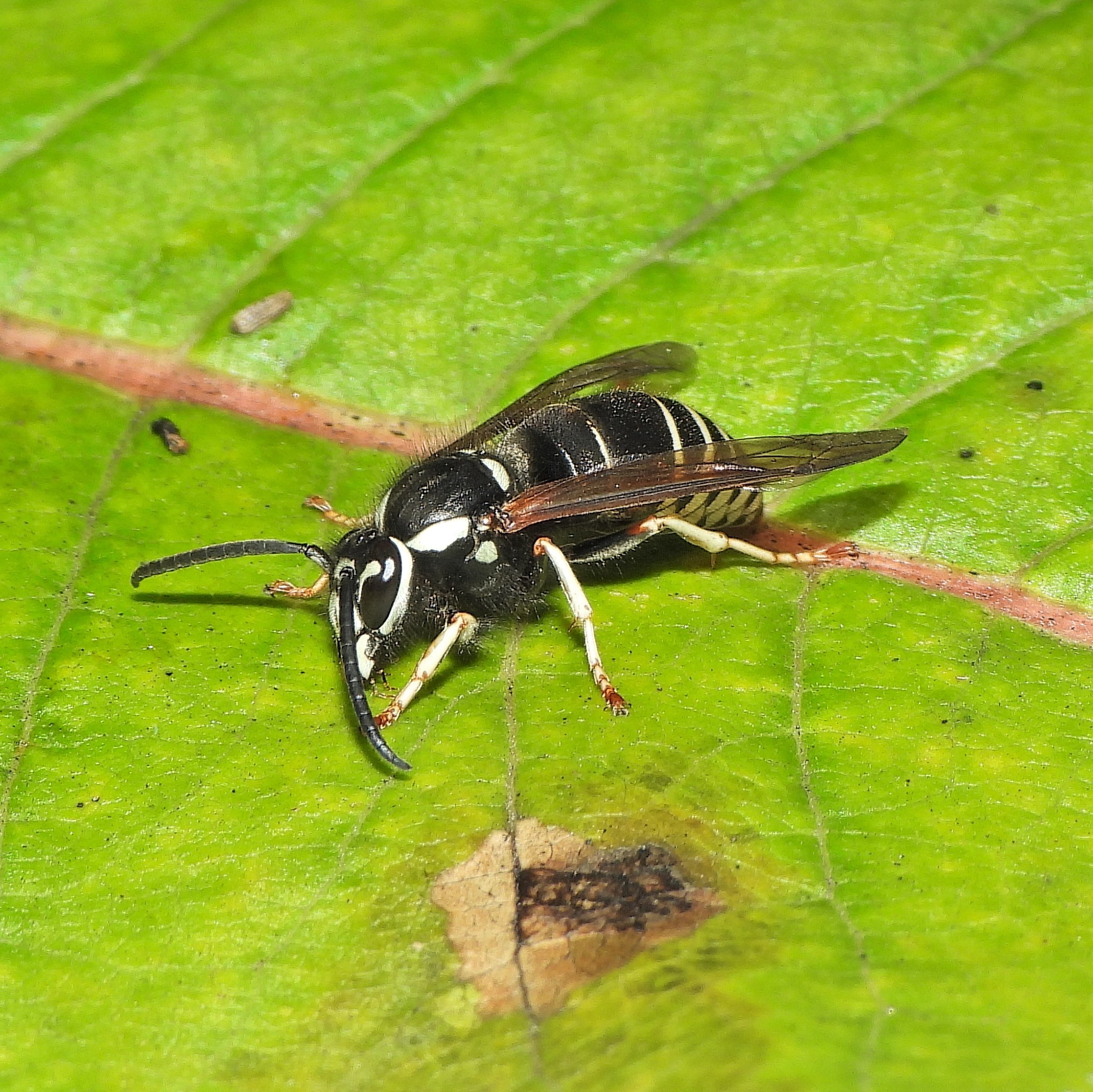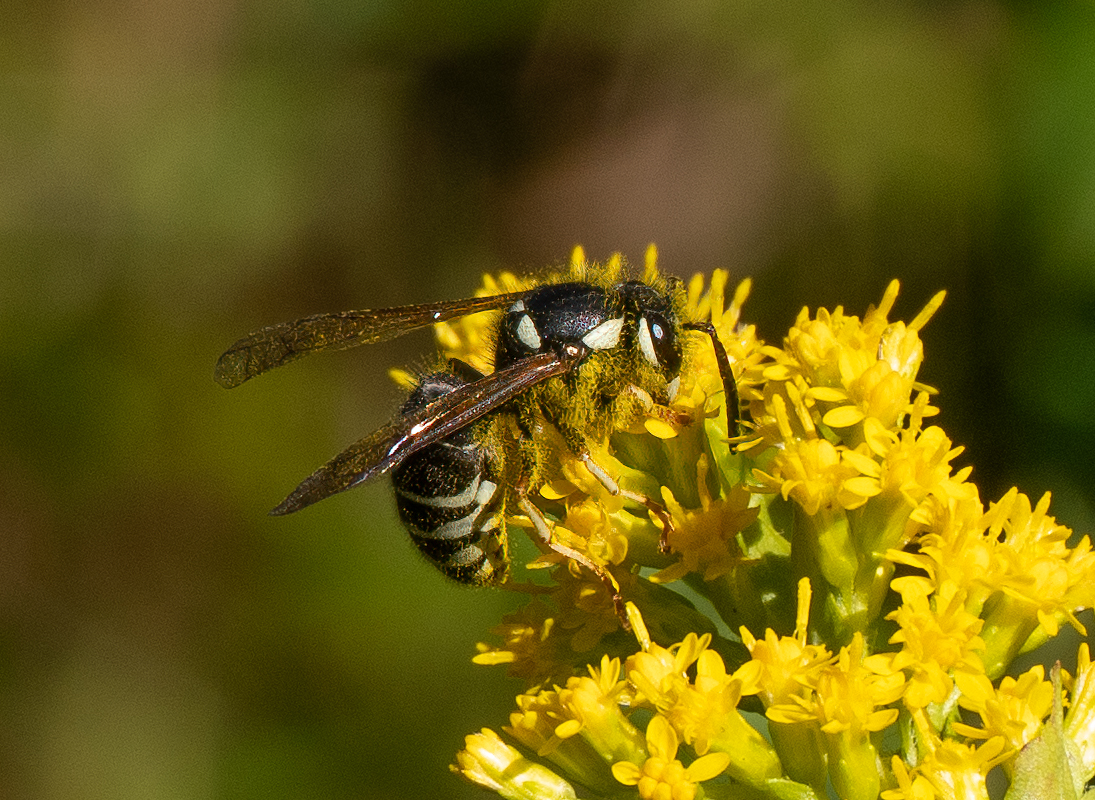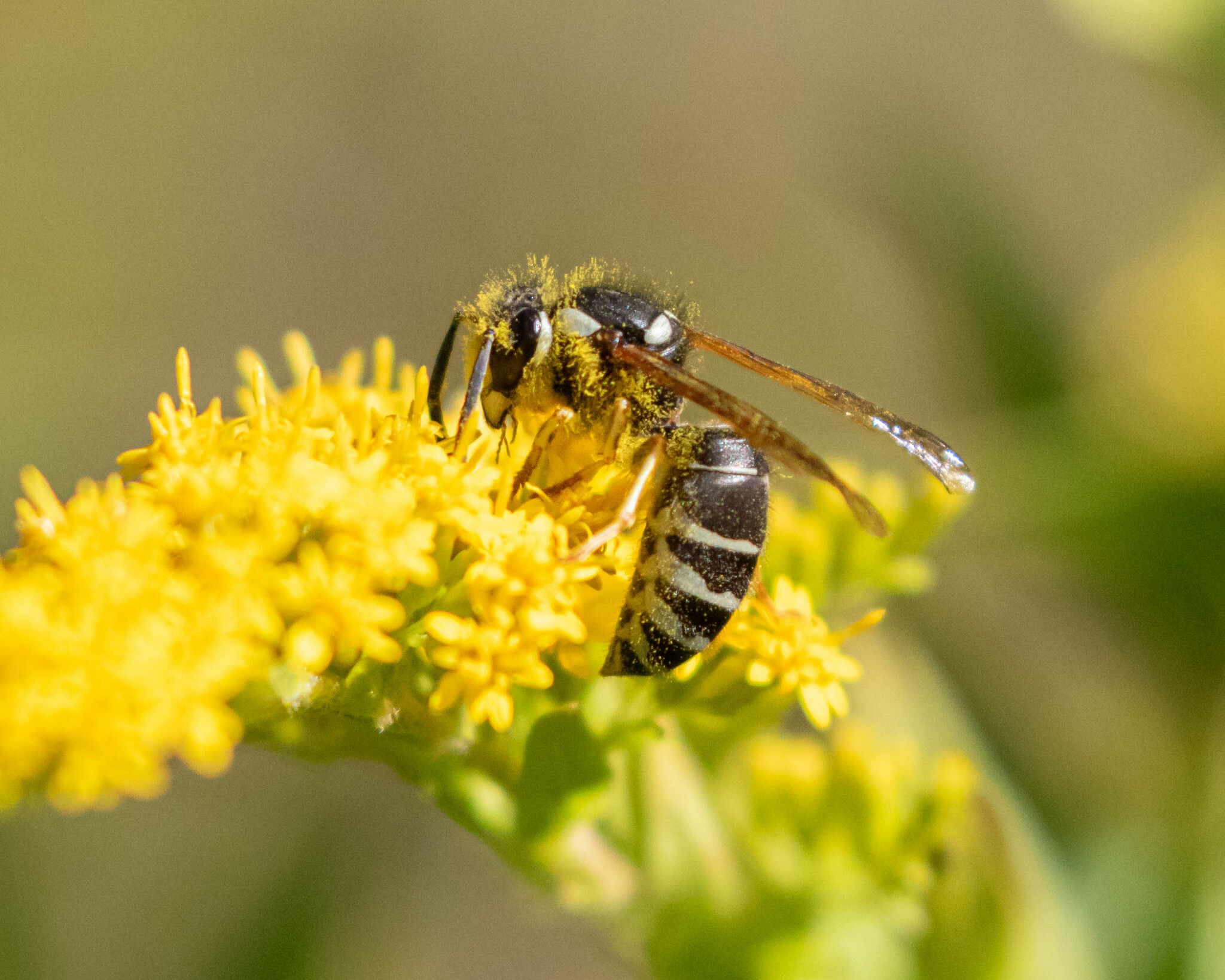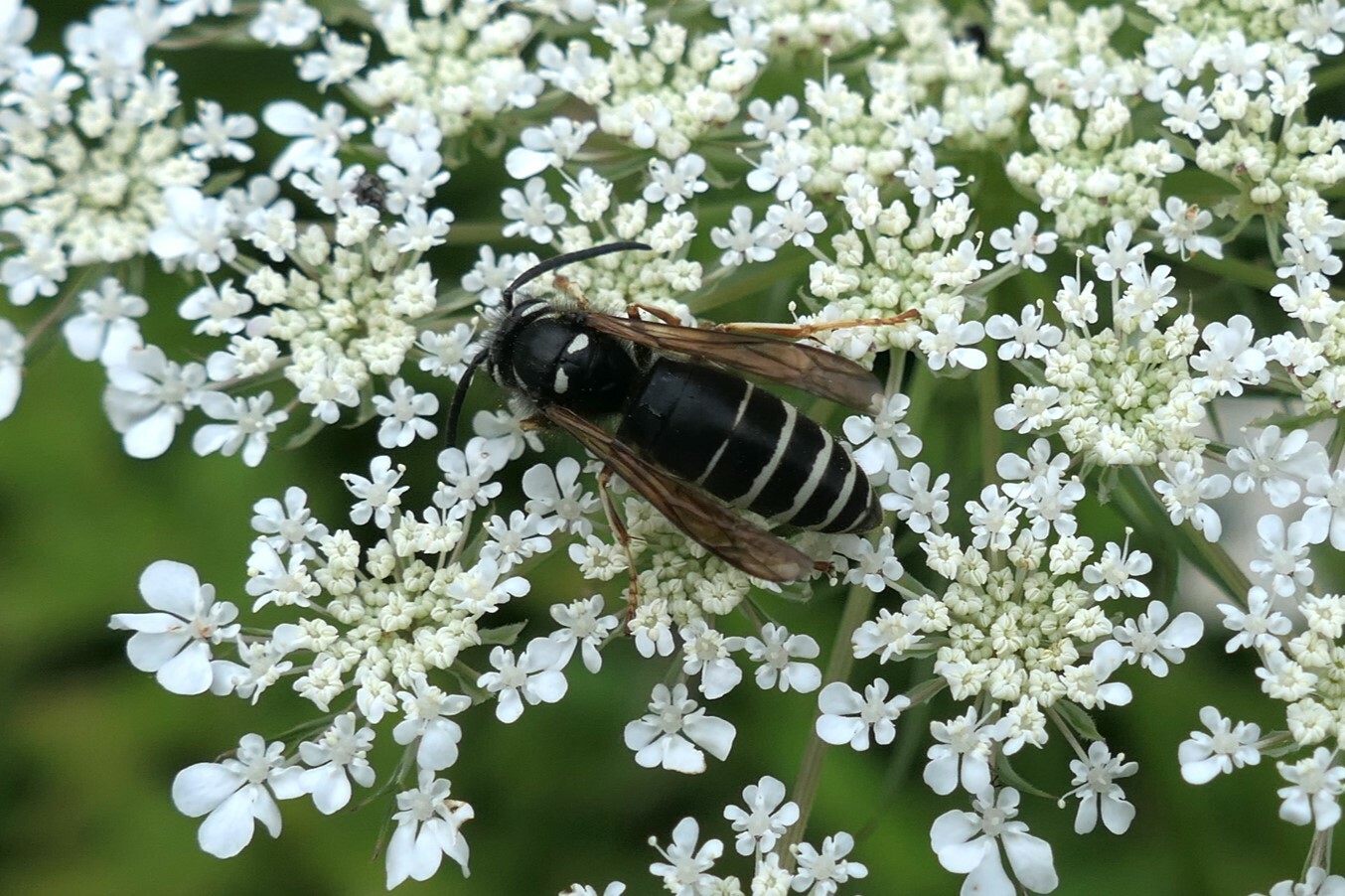Map Snapshot


6 Records
Status
A northern species, probably limited in occurrence to western Maryland. Vespula consobrina is a member of the Vespula rufa species group, which develop much smaller colonies than the ubiquitous V. vulgaris group. Like its close relatives, it is strictly predatory, and doesn't scavenge on dead animals or garbage, so it isn't normally a nuisance. The species has somewhat of a reputation for being aggressive if a nest is disturbed.
Description
This black and ivory species of yellowjacket is similar to Dolichovespula arctica, especially males. It can be distinguished by short oculomalar distance (space between mandible insertion and bottom of eye), dorsal pale fasciae of most abdominal tergites not broken or deeply cleft medially by black, and lack of a pronotal carina. (Buck et al. 2008)
Seasonality Snapshot
Source: Wikipedia
| Vespula consobrina | |
|---|---|

| |
| Scientific classification | |
| Domain: | Eukaryota |
| Kingdom: | Animalia |
| Phylum: | Arthropoda |
| Class: | Insecta |
| Order: | Hymenoptera |
| Family: | Vespidae |
| Genus: | Vespula |
| Species: | V. consobrina
|
| Binomial name | |
| Vespula consobrina (Saussure)
| |
Vespula consobrina, commonly known as the blackjacket (not to be confused with Dolichovespula maculata, which is also called “blackjacket”), is a species of stinging wasp in the family Vespidae,[1][2] which includes multiple cousin species in the northern hemisphere, such as the German yellowjacket[1][2] and other social wasps.
Appearance
[edit]Queen blackjackets are 17mm in size, while female workers are 10-12mm and males 15-16mm. Blackjacket wasps can easily be identified in the wild by their distinct black and white striped pattern on their abdomen and the white and black coloration.
Habitat and distribution
[edit]Blackjackets can be found in all of Canada except Nunavut and in the northern states of the United States. They usually build their nests in abandoned rodent burrows, rotten or fallen trees, and hollow walls and rock cavities. They mostly stay in forested areas, and they rarely come into contact with people.
References
[edit]- ^ a b "Vespula consobrina Report". Integrated Taxonomic Information System. Retrieved 2019-09-24.
- ^ a b "Vespula consobrina species Information". BugGuide.net. Retrieved 2019-09-24.
Further reading
[edit]- Carpenter, James M.; Kojima, Jun-ichi (1997). Checklist of the species of the subfamily Vespinae (Insecta: Hymenoptera: Vespidae). Natural History Bulletin of Ibaraki University. Vol. 1. Mito. pp. 51–92.
- Kimsey, L. S.; Carpenter, J. M. (2012). "The Vespinae of North America (Vespidae, Hymenoptera)". Journal of Hymenoptera Research. 28: 37–65. doi:10.3897/jhr.28.3514.





